Purpose of Military and Veteran Family Research
The purpose of military and Veteran family research is to speak to the issues of family support, resilience, and readiness. Military families are first and foremost families; they manage the same challenges and stressors as civilian families. Yet, they do so in a context characterized by transitions and change. Military families are, by and large, characterized as adaptable and resilient, but family outcomes are often contingent on the availability of resources and whether support systems are equipped to meet their needs.
Excellence in Research on Military and Veteran Families Award
Since 2015, the Military Family Research Institute (MFRI) at Purdue University has worked to recognize military family and Veteran research through the Excellence in Research on Military and Veteran Families Award. In 2019, the Excellence in Research on Military and Family Veteran Award was renamed after Barbara Thompson due to her extensive military and Veteran families’ service. The primary goals of the award are to:
- Bring awareness to the new research available on military and Veteran families across disciplines and to the issues faced by military and Veteran families
- Celebrate rigorous scientific research and advocate for evidence-informed policies and practices for our military and Veteran families
- Build and strengthen relationships between researchers and practitioners who are focused on military and Veteran families
There is a rigorous process implemented to select the winning paper. No nominations or applications are accepted, and authors do not know their work is being considered. Instead, a large panel of accomplished scholars examines relevant articles published during the eligible year identified by the Military REACH team. Then, through multiple rounds of reviews that include standardized quantitative assessments, they arrive at their final selection.
AWARD WINNER AND FINALISTS
-
2022 AWARD WINNER AND FINALISTS
AWARD WINNER
Stander, V. A., Woodall, K. A., Richardson, S. M., Thomsen, C. J., Milner, J. S., McCarroll, J. E., Riggs, D. S., & Cozza, S. J. (2021). The role of posttraumatic stress symptoms and negative affect in predicting substantiated intimate partner violence incidents among military personnel. Military Behavioral Health. 9(4), 442-462. https://doi.org/10.1080/21635781.2021.1953644
Key Findings:
- All else considered, prior IPV perpetration was the most salient predictor of future perpetration.
- Some PTSD symptoms were associated with higher risk for IPV perpetration than others. Specifically, having sleep disturbances, being angry and/or irritable, and experiencing numbing (i.e., feeling emotionally or socially withdrawn, loss of interest in normal activities, difficulty envisioning future or past) were all linked to higher risk of IPV perpetration. These findings emerged when accounting for a range of overlapping symptoms (e.g., depression) and personal experiences.
- Alcohol misuse (e.g., feeling guilty about drinking, feeling annoyed if others suggest cutting back) was also uniquely linked to greater risk of IPV perpetration when accounting for PTSD symptoms and other comorbid conditions.
FINALIST
O’Neal, C. W., & Mancini, J. A. (2021). Military families’ stressful reintegration, family climate, and their adolescents’ psychosocial health. Journal of Marriage and Family, 83(2), 375-393. https://doi.org/10.1111/jomf.12711
Key Findings:
- In general, civilian parents’ stressful family reintegration was associated with adolescents’ perceptions of poorer parenting quality by civilian parents. In turn, when adolescents reported poorer parenting quality by civilian parents, the adolescents averaged more depressive symptoms.
- Active-duty parents’ stressful family reintegration was linked to adolescents’ observations of more interparental conflict, which was then associated with poorer adolescent psychosocial health, manifesting particularly in anxiety and depressive symptoms.
- Although the reintegration experiences of either parent were not related to adolescents’ reports of family cohesion, family cohesion was important for adolescents’ psychosocial health. Adolescents who reported higher family cohesion typically experienced fewer depressive symptoms, greater self-efficacy, and more personal well-being.
FINALIST
Peck, B. S., & Parcell, E. S. (2021). Talking about mental health: Dilemmas U.S. military service members and spouses experience post deployment. Journal of Family Communication, 21(2), 90-106. https://doi.org/10.1080/15267431.2021.1887195
Key Findings:
-
Military couples reported a variety of dilemmas related to communication
about and seeking help for mental health concerns after a deployment,
including:
- Recognizing a need for help but harboring fears of being perceived as “abnormal.”
- Ensuring that encouragement to seek mental health help does not suggest a perception of weakness.
- Persistently encouraging their spouse to get help or bringing up the topic indirectly, yet remaining patient when no action is taken.
- Desiring open communication but recognizing that they cannot understand each other’s unique experiences during deployment.
- Yearning to seek help but feeling that military barriers discouraged these behaviors.
- Wanting to talk about mental health concerns but fearing it would disrupt attempts at normalcy during reintegration.
-
Types of dilemmas discussed by military couples (i.e., who owns the responsibility?):
- My dilemmas were issues that individuals felt were their own responsibility to manage.
- Your dilemmas were issues that the other partner was considered responsible for managing.
- Our dilemmas were issues that both partners needed to address together.
FINALIST
Sullivan, K. S., Dodge, J., McNamara, K., Gribble, R., Keeling, M., Taylor-Beirne, S., Kale, C., Goldbach, J., Fear, N. T., Castro, C. A. (2021). Perceptions of family acceptance into the military community among U.S. LGBT service members: A mixed-methods study. Journal of Military, Veteran and Family Health, 7(s1), 90-101. https://doi.org/10.3138/jmvfh-2021-0019
Key Findings:
-
Questionnaire:
- In general, LGBT Service members reported that their family relationships were accepted by those in the military community.
- When LGBT Service members reported greater partner acceptance, they also tended to report:
- fewer depressive symptoms and fewer physical health symptoms,
- fewer concerns for family safety at their duty location, and
- stronger beliefs that support programs were suitable for LGBT families.
- However, 62.5% of Service members indicated that military support resources were not properly trained to meet LGBT military family needs.
- Affect was found to be a mediating mechanism by which PPR is associated with pain (for veterans) and sleep quality (for both veterans and their spouses). This is consistent with the larger body of literature that suggests that the social regulation of emotion is a powerful way by which close relationships influence health (Farrell et al., 2018). This study builds upon this literature by testing the full mediational path linking social relationships to health through affect, which few studies have examined.
- These findings suggest that harnessing the health-promoting benefits of responsive social relationships could be critical component of complete biopsychosocial interventions such as those aiming to prevent health problems in people at heightened risk of developing them (i.e., secondary intervention) and those aiming to ameliorate symptoms in unwell populations (i.e., tertiary intervention). Potential intervention strategies include workplace policies that promote couples spending more time together, prioritizing programs aimed to help distressed couples communicate in a healthier and more supportive way, and policies in clinical settings to include romantic partners in the treatment of health problems.
FINALIST
Walter, K. H., Leardmann, C. A., Carballo, C. E., McMaster, H. S., Donoho, C. J., & Stander, V. A. (2021). Posttraumatic stress disorder symptom clusters in service members predict new on-set depression among military spouses. Journal of Traumatic Stress, 34(1), 229-240. https://doi.org/10.1002/jts.22575
Key Findings:
- 14.4% of spouses reported new-onset depression during the three-year study period.
- New diagnoses of depression were highest among spouses who were over 30 years old, identified as other than non-Hispanic White or Hispanic, had 2+ children, were also currently serving in the military, were married to Service members in the Army, or were married to Service members who reported alcohol issues. Being married to a member of the Reserve or National Guard was associated with a 60% decreased risk for new-onset depression.
- Service members who reported more effortful avoidance had spouses with a 32% increased risk of new-onset depression.
-
2021 AWARD WINNER AND FINALISTS
AWARD WINNER
Zhang, N., Hoch, J., & Gewirtz, A. H. (2020). The physiological regulation of emotion during social interactions: Vagal flexibility moderates the effects of a military parenting intervention on father involvement in a randomized trial. Prevention Science, 21, 691-701. https://doi.org/10.1007/s11121-020-01122-6
Key Findings:
- The vagus nerve connects to the heart and helps regulate the muscles of the face, neck, and head. Cardiac vagal tone – a measure of heart rate variability – underlies social engagement behaviors and can be considered an index of physiological emotion regulation. Emerging research suggests that cardiac vagal tone may be related to parenting behaviors.
- The After Deployment Adaptive Parenting Tools (ADAPT) program was designed to strengthen effective parenting behaviors and to prevent children’s mental health problems in military families. It teaches many aspects of effective parenting behaviors such as problem solving, monitoring, discipline, skill encouragement, positive involvement, and emotion socialization.
- Although on average military fathers did not show significant improvements in parenting if they were randomized into the ADAPT program (vs. service as usual), our study showed evidence that the ADAPT program was more effective in strengthening fathers’ parenting if fathers had higher levels of physiological emotion regulation capacities. This suggests that physiological emotion regulation may be a biomarker that predicts how effective the ADAPT program would be for military fathers. Such findings can provide a future opportunity to tailor the intervention to best meet fathers’ different needs.
FINALIST
Hajal, N. J., Aralis, H. J., Kiff, C. J., Wasserman, M. M., Paley, B., Milburn, N. G., ... & Lester, P. (2020). Parental wartime deployment and socioemotional adjustment in early childhood: The critical role of military parents’ perceived threat during deployment. Journal of Traumatic Stress, 33(3), 307-317. https://doi.org/10.1002/jts.22475
Key Findings:
- Fathers’ levels of perceived threat during their military deployment (measured via retrospective self-report) was associated with 3- to 6-year-old children’s externalizing behavior problems (measured via maternal report). Deployment perceived threat was a stronger and more consistent predictor of child adjustment than fathers’ actual combat exposure, exposure to post-battle events, and depression, anxiety and PTSD symptoms.
- The association between fathers’ deployment perceived threat and children’s behavioral problems was partially accounted for by fathers’ reports of their sensitive parenting and parent–child interactions and mothers’ reports of family emotional responsiveness. This suggests that the impact of fathers’ deployment perceived threat on child adjustment operates at least partially through family processes related to emotion socialization. Thus, the present findings support the use of interventions that target emotional communication across the family system in prevention and treatment for military families, including those with young children.
- Researchers and clinicians working with military families should incorporate screening for parent perceived threat and chronic stress associated with deployment-related experiences (as well as lifetime traumatic events) into their assessment protocols. Parental trauma-related experiences should be integrated into case conceptualizations, treatment recommendations and interpretation of research findings regardless of whether parents screen positive for symptoms.
FINALIST
A DYADIC EXAMINATION OF DRINKING BEHAVIORS WITHIN MILITARY-CONNECTED COUPLES
Lee, J. D., O’Neill, A. S., Denning, E. C., Mohr, C. D., & Hammer, L. B. (2020). A dyadic examination of drinking behaviors within military-connected couples. Military Behavioral Health, 8(4), 396–409. https://doi.org/10.1080/21635781.2020.1825241
Key Findings:
- This was one of the first studies to examine dyadic drinking within military-connected couples while providing insight into a few under-researched areas — namely, drinking behaviors among military spouses and veterans from nonclinical populations. Interestingly, relatively high rates of hazardous drinking (23%) were found among employed veterans who, on average, had been separated from the military for six years.
- Our study of matched military-connected couples reveals mutual influence in drinking behavior. Specifically, hazardous drinking symptoms of veterans and spouses was predictive of their partner’s drinking frequency. However, hazardous drinking symptoms among veterans (but not spouses) were predictive of higher drinking quantity on drinking days. In other words, spouses of hazardously drinking veterans may be at risk for higher frequency and quantity of consumption. Additionally, psychological distress was individually related to greater number of drinks and drinking more frequently through one’s status as a hazardous drinker.
- Our findings call attention to the interdependent nature of drinking behaviors that occur between military-connected couples when symptoms of hazardous drinking are present, and place both members of the couple at longer-term risk for alcohol-related problems. Drinking intervention programs should consider the family unit when addressing hazardous alcohol use.
FINALIST
PERCEIVED PARTNER RESPONSIVENESS, PAIN, AND SLEEP: A DYADIC STUDY OF MILITARY-CONNECTED COUPLES
O’Neill, A. S., Mohr, C. D., Bodner, T. E., & Hammer, L. B. (2020). Perceived partner responsiveness, pain, and sleep: A dyadic study of military-connected couples. Health Psychology, 39(12), 1089-1099. https://dx.doi.org/10.1037/hea0001035
Key Findings:
- Perceived partner responsiveness (PPR) is the perception that one is cared for, understood, and validated by their partner. PPR is fostered by interactions in which increasingly personal and meaningful information is disclosed and responded to supportively. This dyadic daily diary study of veterans and their spouses suggests that having a responsive partner fosters analgesic and sleep-promoting effects through the social regulation of emotion. Specifically, PPR was positively associated with subsequent sleep quality for both members of the couple while PPR was negatively associated with subsequent pain for veterans only.
- Affect was found to be a mediating mechanism by which PPR is associated with pain (for veterans) and sleep quality (for both veterans and their spouses). This is consistent with the larger body of literature that suggests that the social regulation of emotion is a powerful way by which close relationships influence health (Farrell et al., 2018). This study builds upon this literature by testing the full mediational path linking social relationships to health through affect, which few studies have examined.
- These findings suggest that harnessing the health-promoting benefits of responsive social relationships could be critical component of complete biopsychosocial interventions such as those aiming to prevent health problems in people at heightened risk of developing them (i.e., secondary intervention) and those aiming to ameliorate symptoms in unwell populations (i.e., tertiary intervention). Potential intervention strategies include workplace policies that promote couples spending more time together, prioritizing programs aimed to help distressed couples communicate in a healthier and more supportive way, and policies in clinical settings to include romantic partners in the treatment of health problems.
-
2020 AWARD WINNER AND FINALISTS
AWARD WINNER
EVERYTHING HERE IS FINE: PROTECTIVE BUFFERING BY MILITARY SPOUSES DURING A DEPLOYMENT
Carter, S. P., Renshaw, K. D., Allen, E. S., Markman, H. J., & Stanley, S. M. (2019). Everything here is fine: Protective buffering by military spouses during a deployment. Family Process, 59(3), 1261-1274. https://doi.org/10.1111/famp.12457
Key Findings:
- It is common for civilian partners to struggle with how much information to share with their Service members during deployment given that such conversations might distract the Service members during high-risk situations, putting them or others in danger. Thus, some civilian partners report using protective buffering during deployments where they do not readily share concerns from the home front and/or conceal problems or information to shield their Service member.
- This study (N=54 military couples) examined associations between the civilian partner’s use of protective buffering, the Service member’s family-related distraction (i.e., thinking about family members or family situations while performing job duties), and both partners’ marital satisfaction and psychological distress across the deployment cycle (i.e., predeployment, during deployment, and postdeployment).
- Although almost all civilian partners reported using protective buffering during deployment, this strategy was not associated with the Service members’ being less distracted by family-related concerns while deployed. Instead, protective buffering was associated with higher psychological distress and lower levels of marital satisfaction for both the civilian partner and the Service member.
AWARD FINALIST
Zhang, N., Piehler, T. F., Gewirtz, A. H., Zamir, O., & Snyder, J. J. (2019). Trait mindfulness and anger in the family: A dyadic analysis of male service members and their female partners. Journal of Marital and Family Therapy, 46(1), 15-29. https://doi.org/10.1111/jmft.12384
Key Findings:
- Service members who have been previously deployed sometimes demonstrate anger symptoms that can negatively impact themselves and their families. Trait mindfulness, the tendency to be non-judgmentally present in the moment, may help reduce anger and the relational impacts of anger.
- Using data from 155 heterosexual military couples, this study examined how three different facets of trait mindfulness: (1) acting with awareness (i.e., being aware of one’s thoughts and emotions), (2) non-judging (i.e., not judging one’s thoughts and emotions), and (3) non-reactivity (i.e., not impulsively acting on one’s thoughts and emotions) were associated with anger that was observed during a conflict resolution task.
- For both mothers and fathers, non-reactivity was associated with less observed anger. Mothers’ non-reactivity was also associated with less observed anger of fathers. Neither acting with awareness nor non-judging were related to anger.
AWARD FINALIST
Sticking it out in trauma-focused treatment for PTSD: It takes a village.
Meis, L. A., Noorbaloochi, S., Hagel Campbell, E. M., Erbes, C. R., Polusny, M. A., Velasquez, T. L., ... & Spoont, M. R. (2019). Sticking it out in trauma-focused treatment for PTSD: It takes a village. Journal of Consulting and Clinical Psychology, 87(3), 246-256. http://dx.doi.org/10.1037/ccp0000386
Key Findings:
- Trauma-focused treatment is known to help those who struggle with posttraumatic stress disorder (PTSD) experience fewer symptoms, but the number of Veterans who drop out before completing PTSD treatment is concerning.
- This study examined how social control (i.e., explicit support efforts by a loved one to get their Veteran to complete PTSD treatment and face any difficult emotions along the way) and PTSD symptom accommodation (i.e., a loved one changing his/her behaviors to lessen or avoid the stress that their Veteran may experience during PTSD treatment) were related to Veterans’ treatment completion. Additionally, this study also explored whether these associations varied by the Veteran’s perceived relationship strain (i.e., feeling like a loved one is critical of them or stress in the relationship).
- Veterans who received encouragement from their partner to face the difficult phases of treatment (i.e., experienced social control) were more likely to complete treatment. Social control was not related to lower likelihood of treatment dropout for Veterans with high-strain relationships. That is, when Veterans felt supported and encouraged by their partner, they were likely to remain in treatment regardless of relationship strain.
AWARD FINALIST
Eliezer, D., Hilbert, A. J., Davis, L. H., Hylton, K., Klauberg, W. X., Hurley, M. M., ... & Galbreath, N. W. (2020). Sexual assault experiences vary for active duty military women depending on their relationship to the perpetrator. Journal of Family Violence, 35, 325-338. https://doi.org/10.1007/s10896-019-00085-9
Key Findings:
- Prevention of sexual assault is an ongoing topic of discussion among military policy makers and clinicians, yet little research has focused on these experiences specifically among active-duty Service members.
- Using a sample of active-duty women (N = 1,230) who had experienced sexual assault in the past 12 months, this study explored differences in sexual assault experiences (e.g., type of sexual assault, location, support after reporting) based on the women’s relationship to the perpetrator (i.e., intimate partner, friend/acquaintance, stranger, not specified).
- Most women were assaulted by someone they knew. Further, women assaulted by an intimate partner were also more likely to report sexual harassment before and after the assault; these women also had greater difficulty garnering support from military leadership and victim advocates after reporting compared to those who were assaulted by non-intimate partners (e.g., strangers, acquaintance).
AWARD FINALIST
Knobloch, L. K., Knobloch-Fedders, L. M., & Yorgason, J. B. (2019). Mental health symptoms and the reintegration difficulty of military couples following deployment: A longitudinal application of the relational turbulence model. Journal of Clinical Psychology, 75, 742-765. https://doi.org/10.1002/jclp.22734
Key Findings:
- The transition from deployment to reintegration is a difficult time for Service members and their at-home partners. Drawing on suppositions of relationship turbulence theory, this study examined the extent to which relationship uncertainty and partner interference (i.e., disruption in daily routines) may link mental health concerns to reintegration difficulty. Furthermore, this study also explored when Service members and their at-home partners tend to experience reintegration difficulty.
- Data were collected from 555 military couples over eight consecutive months. On average, military couples began their participation in the study approximately 4 days after returning from deployment.
- The results highlight the complex role relationship uncertainty and partner interference play in explaining the link between mental health and reintegration difficulty. Examination of Service members and at-home spouses’ reports of reintegration difficulties across time showed that military couples tend to experience the greatest amount of reintegration difficulty approximately 4- 5 weeks after the Service member returns from deployment.
-
2019 AWARD WINNER AND FINALISTS
AWARD WINNER
Allen, E., Knopp, K., Rhoades, G., Stanley, S., & Markman, H. (2018). Between- and within-subject associations of PTSD symptom clusters and martial functioning in military couples. Journal of Family Psychology, 32, 134-144. http://dx.doi.org/10.1037/fam0000363
Key Findings:
- Overall, 34.5% of the service members at the first study time point met or exceeded the screening cutoff score used to identify soldiers with PTSD symptoms. Over the course of the study, trends indicated: a decrease in PTSD for husbands, a decrease in marital satisfaction for both partners, and an increase in wives’ reports of conflict for both themselves and their partners.
- On average, in couples where husbands experienced greater PTSD symptoms, there were also reports of poorer marital functioning, including lower satisfaction, lower positive bonding, and higher conflict behavior. This was true across all four PTSD symptom clusters.
- When testing each symptom cluster separately (numbing, hyperarousal, effortful avoidance, and re- experiencing), husbands with more PTSD symptoms exhibited poorer martial functioning.
- Even when accounting for all four symptom clusters at the same time, greater numbing was still associated with multiple indicators of marital functioning. Effortful avoidance remained independently associated with husbands’ reports of less conflict.
- Of the four PTSD symptom clusters, numbing symptoms were the strongest predictor of changes in marital functioning over time. Numbing symptoms were related to greater conflict and decreased bonding for both partners, as well as decreased satisfaction for wives.
- Surprisingly, husbands’ hyperarousal symptoms were linked to greater marital satisfaction for wives.
AWARD FINALIST
Gewirtz, A. H., DeGarmo, D. S., & Zamir, O. (2018). After deployment, adaptive parenting tools: 1-year outcomes of an evidence-based parenting program for military families following deployment. Prevention Science, 19(4), 589–599. https://doi.org/10.1007/s11121-017-0839-4
Key Findings:
- Participation in the ADAPT program was associated with an increase in effective parenting.
- Increases in effective parenting were related to improved child adjustment.
- Parents that attended a majority of the ADAPT sessions (seven or more) showed stronger impacts of the program than parents who attended fewer than seven sessions.
AWARD FINALIST
Kritikos, T. K., Comer, J. S., He, M., Curren, L. C., & Tompson, M. C. (2019). Combat experience and posttraumatic stress symptoms among military-serving parents: A meta-analytic examination of associated offspring and family outcomes. Journal of Abnormal Child Psychology, 47(1),131-148. https://doi.org/10.1007/s10802-018-0427-5
Key Findings:
- Parents with PTSD/PTSS tended to report a higher level of difficulty with parenting, poorer relationship quality with their children, lower perceptions of bonding with their children, and higher levels of child behavioral problems.
- Although the effect size was small, combat exposure was associated with greater parenting difficulties and family difficulties. Note: This association was only examined in 8 studies.
- The strength of associations between military parental PTSD/PTSS and child symptoms varied depending on who reported the child outcomes (this was considered a moderating influence). For example, when the veteran reported child outcomes, the association between PTSD/PTSS and family difficulties was generally larger than when the civilian parent or child reported child outcomes.
- The association between PTSD/PTSS and child symptoms varied depending on the specific symptom examined. The largest associations were noted for children’s emotional problems, total symptoms, and externalizing symptoms.
AWARD FINALIST
O’Neal, C. W., Lucier-Greer, M., Duncan, J. M., Mallette, J. K., Arnold, A. L., & Mancini, J. A. (2018). Vulnerability and resilience within military families: Deployment experiences, reintegration, and family functioning. Journal of Child and Family Studies, 27, 3250-3261. https://doi.org/10.1007/s10826-018-1149-6
Key Findings:
- Active duty spouse reports of more frequent deployment communication were associated with fewer negative family reintegration experiences for adolescents, but not the reintegration experiences of either spouse. Civilian spouse reports of more frequent communication were associated with their own reports of positive reintegration.
- Civilian spouse perceptions of better household management during deployment were associated with more positive reintegration experiences and fewer negative reintegration experiences.
- Family members who reported greater positive family reintegration experiences, generally viewed their family functioning more favorably than those who reported less positive reintegration.
- Spouses who reported more negative family reintegration experiences tended to view their family functioning less favorably compared to those with less negative family reintegration.
AWARD FINALIST
Julian, M. M., Muzik, M., Kees, M., Valenstein, M., Dexter, C., & Rosenblum, K. L. (2018). Intervention effects on reflectivity explain change in positive parenting in military families with young children. Journal of Family Psychology, 32(6), 804 – 815. http://dx.doi.org/10.1037/fam0000431
Key Findings:
- Compared to parents who completed the at-home program, those in the in-person group showed greater emotional responsiveness (e.g., showing warmth when the child completed a task) and positive affect (e.g., displaying joyfulness toward the child) when interacting with their child two months after the program.
- These benefits of the in-person group program were equally shown in families categorized as high risk (i.e., parent younger than 30, family income less than $30,000/year, education of GED/high school diploma or less) and low risk (i.e., none of the previously listed risk factors).
- The benefits of the in-person group program over the at-home program were not evident across all parenting areas. Two months after the intervention, parents in both programs showed similar behavioral responsiveness (e.g., providing developmentally appropriate help), withdrawal and depression (e.g., lack of expression, disinterest), and irritability and anger (e.g., frustration, threatening) when interacting with their child.
- In-person group program participation was related to greater reflective parenting skills (i.e., a parent’s ability to understand their own intentions and their child’s intentions for behaving a particular way). Greater parenting reflectivity was, in turn, related to higher levels of positive affect in parents post-program. Parenting reflectivity was the key mechanism that explained the relationship between program participation and parent positive affect. This relationship was not evident for any other parenting outcome.
-
2018 AWARD WINNER AND FINALISTS
AWARD WINNER
Arnold, A. L., Lucier-Greer, M., Mancini, J., Ford, J., & Wickrama, K. (2017). How family structures and processes interrelate: The case of adolescent mental health and academic success in military families. Journal of Family Issues, 38(6), 858-879. https://doi.org/10.1177/0192513X15616849
Key Findings:
- Youth from married families were less likely to have depressive symptoms, and more likely to have greater academic performance than youth from single-parent families and stepfamilies.
- Adolescents with family support and positive interpersonal interactions with their parents had greater initiative and therefore, were more likely to have greater academic performance and less symptoms of depression.
- There were no differences of parent-adolescent interactions across all family structure types.
AWARD FINALIST
Associations between prior deployments and marital satisfaction among Army couples.
Karney, B. R., & Trail, T. E. (2017). Associations between prior deployments and marital satisfaction among Army couples. Journal of Marriage and Family, 79, 147-160. https://doi.org/10.1111/jomf.12329
Key Findings:
- Marital satisfaction was lower among couples who had experienced one or more deployments.
- Soldiers who deployed to a combat zone and were exposed to traumatic events during combat were more likely to report lower marital satisfaction.
- Combat exposure was directly related to PTSD symptoms and PTSD was directly related to marital satisfaction; couples were less satisfied with their marriages when the Service member reported more PTSD symptoms.
AWARD FINALIST
Patterns of vulnerabilities and resources in U.S. military families.
Trail, T. E., Meadows, S. O., Miles, J. N., & Karney, B. R. (2017). Patterns of vulnerabilities and resources in U.S. military families. Journal of Family Issues, 38, 2128-2149. https://doi.org/10.1177/0192513X15592660
Link to SourceArticle Abstract:
The appropriate format for services supporting military families depends on how vulnerabilities and resources are distributed across and within those families. If different types of vulnerabilities cluster together, then programs supporting families should combine multiple services rather than targeting specific concerns. Yet scant data exist about how vulnerabilities and resources covary within military families. The current study addressed this issue through a latent class analysis of data on a wide range of domains obtained from a stratified random sample of 1,981 deployable, active component, married servicemembers and their spouses. Within married deployable servicemembers, results indicated that vulnerabilities and resources cluster together within individuals; servicemembers at high risk in one domain are likely to be high risk in multiple domains. This is less the case for spouses. One or both spouses are vulnerable in 39% of couples. These results support programs that provide vulnerable military families with more comprehensive services.
AWARD FINALIST
Vogt, D., Smith, B. N., Fox, A. B., Amoroso, T., Taverna, E., & Schnurr, P. P. (2017). Consequences of PTSD for the work and family quality of life of female and male U.S. Afghanistan and Iraq War veterans. Social Psychiatry and Psychiatric Epidemiology, 52, 341-352. https://doi.org/10.1007/s00127-016-1321-5
Key Findings:
- The employment and relationship status of Veterans with PTSD at Time 2 did not differ significantly compared to Veterans without PTSD.
- Male and female Veterans with PTSD were more likely to report less satisfaction with intimate relationships and parenting experiences.
- Probable PTSD in female Veterans was associated with unemployment but not in male Veterans with probable PTSD.
-
2017 AWARD WINNER AND FINALISTS
AWARD WINNER
Kahn, J., Collinge, W., & Soltysik, R. (2016). Post-9/11 veterans and their partners improve mental health outcomes with a self-directed mobile and web-based wellness training program: A randomized controlled trial. Journal Of Medical Internet Research, 18(9). https://doi.org/10.2196/jmir.5800
Key Findings:
- Veterans of the Mission Reconnect group showed more improvements in mental health measures at week 8 and week 16 than any other groups.
- The Prevention and Relationship Enhancement program group showed modest gain in mental health, and adding the Mission Reconnect program to it resulted in more improvements.
- Weekly couples’ massages led to significant reductions in pain, stress, anxiety, and depression.
AWARD FINALIST
Cozza, S. J., Fisher, J. E., Mauro, C., Zhou J., Ortiz, C. D., Skritskaya, N., Wall, M. M., Fullerton, C. S., Ursano, R. J., & Shear, M. K. (2016). Performance of DSM-5 persistent complex bereavement disorder criteria in a community sample of bereaved military family members. American Journal of Psychiatry, 173, 919-929. https://doi.org/10.1176/appi.ajp.2016.15111442
Brief Summary:
The loss of a loved one is painful, and although many people adapt to such loss over time, some develop clinical levels of symptomology as a result of grieving. Clinically impairing grief is distinct from typical grief in its duration (6+ months) and intensity. Several terms and diagnostic criteria have been proposed to describe sustained bereavement, such as complicated grief disorder, prolonged grief disorder, and persistent complex bereavement disorder (PCBD). See table on the next page to differentiate proposed symptom criteria. The most recent DSM (a diagnostic manual for mental health professionals) includes PCBD as a “condition for further study,” indicating that the diagnosis requires evaluation to determine whether its criteria effectively diagnose individuals struggling with bereavement.
AWARD FINALIST
Differential child maltreatment risk across deployment periods of U.S. Army soldiers.
Taylor, C. M., Ross, M. E., Wood, J. N., Griffis, H. M., Harb, G. C., Mi, L., Song, L., Strane, D., Lynch, K. G., & Rubin, D. M. (2016). Differential child maltreatment risk across deployment periods of U.S. Army soldiers. American Journal of Public Health, 106, 153-8. https://doi.org/10.2105/AJPH.2015.302874
Key Findings:
- Soldiers’ children that were under two years of age had an increased risk of experiencing maltreatment in the six months after deployment compared to the six months before deployment.
- The rate of maltreatment of young children of Soldiers deployed twice increased substantially during the second deployment compared to the first deployment.
- Maltreatment of young children of Soldiers increased during deployment compared to the six months before deployment.
-
2016 AWARD WINNER AND FINALISTS
AWARD WINNER
War and marriage: Assortative mating and the World War II GI Bill.
Larsen, M., McCarthy, T., Moulton, J., Page, M., & Patel, A. (2015). War and marriage: Assortative mating and the World War II GI Bill. Demography 52(5), 1431–1461. https://doi.org/10.1007/s13524-015-0426-x
Key Findings:
- Serving in the military with GI Bill benefits was associated with an increase in veterans’ years of education (average increase of .3 to .4 years).
- The GI Bill was not related to veterans’ marital status but being a WWII veteran with GI benefits was associated with marrying an older wife with a higher level of education.
- When examining cohorts of WWII veterans who did not receive GI Bill benefits, no discontinuous changes were found among the WWII veterans or their wives in terms of education level.
- A number of other possible causes for the differences in wives’ age at marriage and wives’ education were examined. The results were not explained by military service, homeownership, differences in sex ratios, or the GI Bill’s effect on women’s education.
AWARD FINALIST
Tsai, J., Rosenheck, R. A., Kasprow, W. J., & Kane, V. (2015). Characteristics and use of services among literally homeless and unstably housed U.S. veterans with custody of minor children. Psychiatric Services, 66(10), 1083–1090. https://doi.org/10.1176/appi.ps.201400300
Key Findings:
- Women veterans were more likely to have custody of their children compared to men.
- Regardless of housing situation, both men and women veterans with child custody were younger and less likely to have various physical health conditions and psychiatric disorders compared to veterans without children in custody.
- Female veterans with children in custody were more likely to be referred to a permanent support-housing program (which tends to be accommodating for veteran families), whereas male veterans with children in custody were more likely to be referred to the transitional housing program (which has fewer resources for parents).
AWARD FINALIST
Fischer, E. P., Sherman, M. D., McSweeney, J. C., Pyne, J. M., Owen, R. R., & Dixon, L. B. (2015). Perspectives of family and veterans on family programs to support reintegration of returning veterans with posttraumatic stress disorder. Psychological Services, 12(3), 187-198. https://doi.org/10.1037/ser0000033
Key Findings:
- Information specific to posttraumatic stress disorder (PTSD) and learning about Veterans Affairs (VA) hospital services and benefits were listed as critical for programs to provide. Relatedly, emphasis on gaining practical skills to handle issues regarding PTSD and reintegration was vital program content.
- Veterans and family members expressed need for support during post-deployment reintegration.
- Veterans and their families discussed the need to gain one another’s perspective as each felt the other group did not understand what they were going through.
-
2015 AWARD WINNER AND FINALISTS
AWARD WINNER
Reinstitutionalizing families: Life course policy and marriage in the military.
Lundquist, J., & Xu, Z. (2014). Reinstitutionalizing families: Life course policy and marriage in the military. Journal of Marriage and Family 76(5), 1063-1081. https://doi.org/10.1111/jomf.12131
Key Findings:
- A majority of soldiers and spouses reported that getting married allowed them to move out of the barracks, subsequently providing them with privacy and fewer rules to follow. However, some soldiers reported enjoying life in the barracks and that they would not consider getting married as a way of “escaping.”
- Many soldiers and their spouses reported that the decision to get married was expedited by impending war zone deployments or Permanent Changes of Station (PCS; i.e., moving to a new location). Impending war zone deployments facilitate marriages because the couples desire emotional stability in light of incoming uncertainty and the practical benefits of marriage, such as survivor’s monetary benefits, while PCS orders force couples to decide to permanently break up or get married.
- Many soldiers reported enjoying the financial security and benefits of being married in the military as well as the opportunities being in the military can provide.
AWARD FINALIST
Gewirtz, A.H., McMorris, B.J., Hanson, S., & Davis, L. (2014). Family adjustment of deployed and nondeployed mothers in families with a parent deployed to Iraq or Afghanistan. Professional Psychology: Research and Practice, 45(6), 465-477. https://doi.org/10.1037/a0036235
Key Findings:
- Deployed mothers reported more often having difficulty finding a job, troubles and changes in responsibilities at work, and problems in school than non-deployed mothers.
- Deployed mothers reported more conflicts with partners around parenting than non-deployed mothers.
- Mothers who had deployed reported greater distress (higher scores on measures of posttraumatic stress disorder (PTSD) and depression symptoms) than non-deployed mothers.
- No differences were found between the deployed and non-deployed mothers on measures of couple adjustment, parenting, or child functioning.
AWARD FINALIST
Renshaw, K.D., Campbell, S.B., Meis, L., Erbes, C. (2014). Gender differences in associations of PTSD symptom clusters with relationship distress in U.S. Vietnam veterans and their partners. Journal of Traumatic Stress 27(3), 283-290. https://doi.org/10.1002/jts.21916
Key Findings:
- Emotional numbing (e.g., difficulty feelings positive feelings, such as love) and withdrawal symptoms were the most strongly associated with relationship distress for both genders and their partners.
- The association between numbing and withdrawal symptoms and relationship distress was 25% greater for female Veterans and their male partners than it was for male Veterans and their female partners.
- For Veterans, but not partners, the PTSD symptoms of hyperarousal and feeling a lack of control were associated with greater relationship distress.
AWARD FINALIST
Emotional abuse and its unique ecological correlates among military personnel and spouses.
Foran, H. M., Heyman, R. E., & Slep, A. M. S. (2014). Emotional abuse and its unique ecological correlates among military personnel and spouses. Psychology of Violence, 4(2), 128-142. https://doi.org./10.1037/a0034536
Key Findings:
- The factors most strongly related to risk for experiencing emotional abuse were relationship dissatisfaction, poor self-efficacy, financial stress, and alcohol problems.
- At the community level, more support from neighbors and community cohesion were uniquely related to a reduced risk of experiencing clinically significant emotional abuse for Active Duty men.
- Among Active Duty women, working fewer hours was related to a reduced risk of experiencing clinically significant emotional abuse.
- Among female civilian spouses, more support from military leadership was related to a lower risk of experiencing clinically significant emotional abuse.
AWARD FINALIST
Theiss, J.A., & Knobloch, L.K. (2014). Relational turbulence and the post-deployment transition: Self, partner, and relationship focused turbulence. Communication Research 4(1), 27-51. https://doi.org/10.1177/0093650211429285
Key Findings:
- Self-uncertainty (the individual’s uncertainty about the relationship) was negatively associated with relationship maintaining behaviors, potentially due to those partners being less willing to invest in a relationship about which they are not certain.
- Partner uncertainty (your partner’s perceived uncertainty about the relationship) and partner interference (either blocking or not facilitating a partner’s goal) were negatively related to partner responsiveness.
- Frequent interruptions to partners’ goals and routines contribute to a tumultuous relationship climate.
- Relationship distress was more pronounced for couples who had been reunited for a longer period of time.


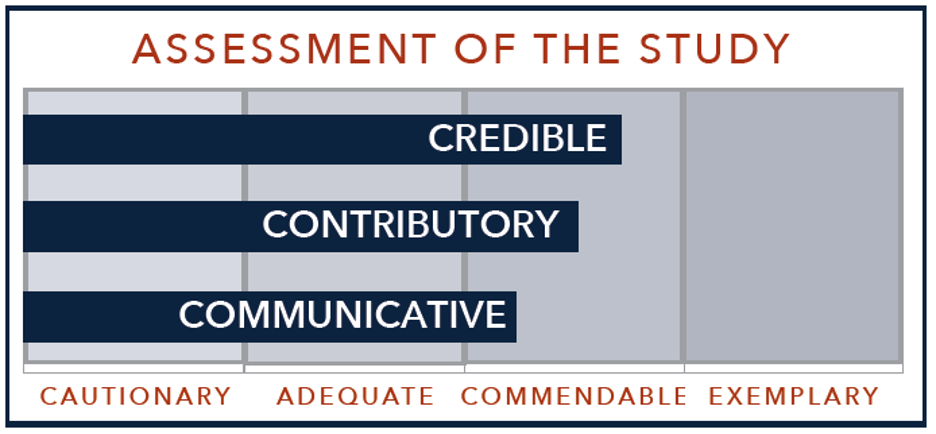


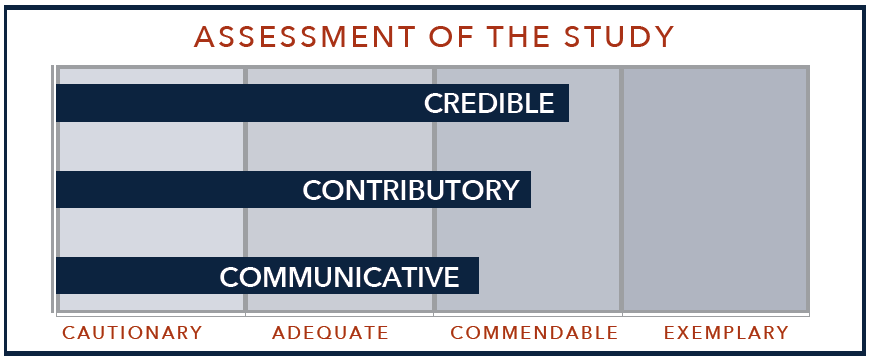

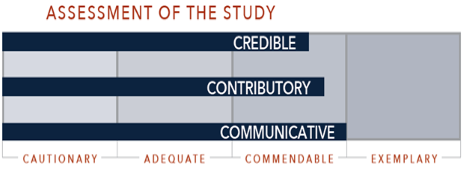
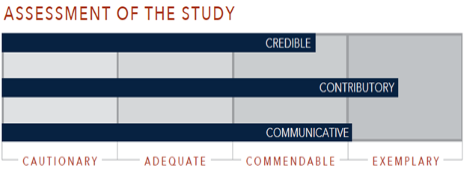
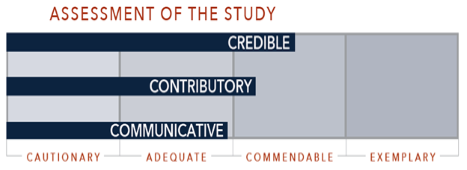
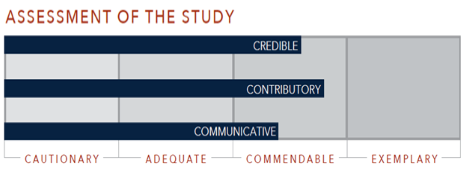
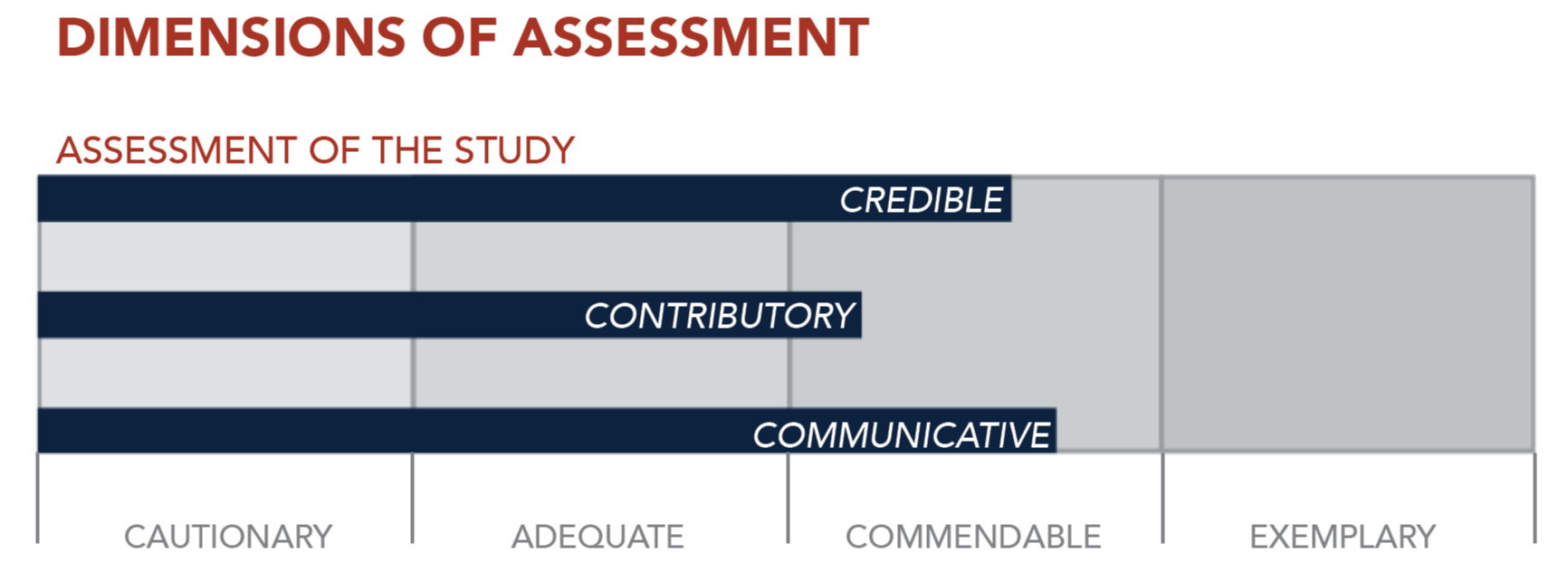
Awards By Year
2022
2021
2020
2019
2018
2017
2016
2015